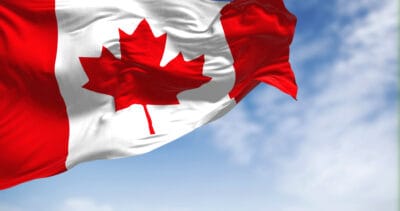When to claim the Canada Pension Plan (CPP) benefits is a long-standing concern for future Canadian retirees. While the pension payment is for life, you might more to cover all financial needs in retirement. Furthermore, only those who have made the max CPP contribution each year for at least 39 years can receive the maximum benefit.
For CPP users age 65 and claiming the benefit today, the average monthly retirement pension is $831.92 (as of January 2024). The earliest age a prospective retiree can claim the CPP is 60. However, early claimants will take a big hit as the amount decreases by 7.2% per year (0.6% per month) before 65 or a permanent 36% reduction.
Delay incentive
The CPP has a delay option, which allows for a significantly higher payout. The incentive is for those without urgent financial need who can wait five years longer and collect the benefits at 70. A retiree’s financial reward is an 8.4% increase per year past 65 or a 42% permanent boost. Hence, instead of the average $831.92, you’ll receive $1,181.33 monthly.
Post-retirement benefit
The CPP Post-Retirement Benefit (PRB) is available to those aged 65 to 70 who will continue to work and receive the retirement benefits. You must contribute to the fund to see an increase, and the corresponding increase due to successive contributions is the PRB for life.
Augment with investment income.
The CPP Investment Board (CPPIB), the CPP fund manager, reminds future retirees that the pension is a foundation in retirement, whether you claim at 60, 65, or 70. It replaces only 25% (33% soon with the enhancements) of the average pre-retirement income.
The solution or remedy is to fill the income gap with investment income. Most who follow this route invest in dividend stocks, reinvest the dividends to compound returns and build a substantial nest egg over time. Canadians can use the Registered Retirement Savings Plan (RRSP) for a tax shelter and the Tax-Free Savings Account (TFSA) for tax-free income.
Eligible investments
The RRSP and TFSA are the best retirement accounts in Canada. Dividend stocks are eligible investments in both. Freehold Royalties (TSX:FRU), an energy stock but not an oil producer, is a profitable investment option. Besides the generous 7.61% dividend yield, the payout is monthly.
The current share price is $14.19 (+5.64% year to date). This $2.14 billion energy royalty company has vast land holdings in Canada (6.2 gross million acres) and a sizeable land base (1.1 million gross drilling acres) in the United States. In 2023, net income declined 36.9% year over year to $132 million due to lower commodity prices.
Nonetheless, Freehold had a record leasing year, with 122 agreements, representing a 33% increase from a year ago. The $162.7 million total dividend payment in 2023 was also a record. According to its president and chief executive officer, David Spyker, Freehold expects to maintain considerable financial flexibility throughout 2024 and provide consistent shareholder returns.
Added boost
Consider delaying the Old Age Security (OAS), too, and realize a 36% increase. The payment bumps from $713.34 (max 2024) to $970.14 monthly. With the permanent increases in the CPP and OAS plus investment income, Canadians can live comfortably in retirement at age 70.







